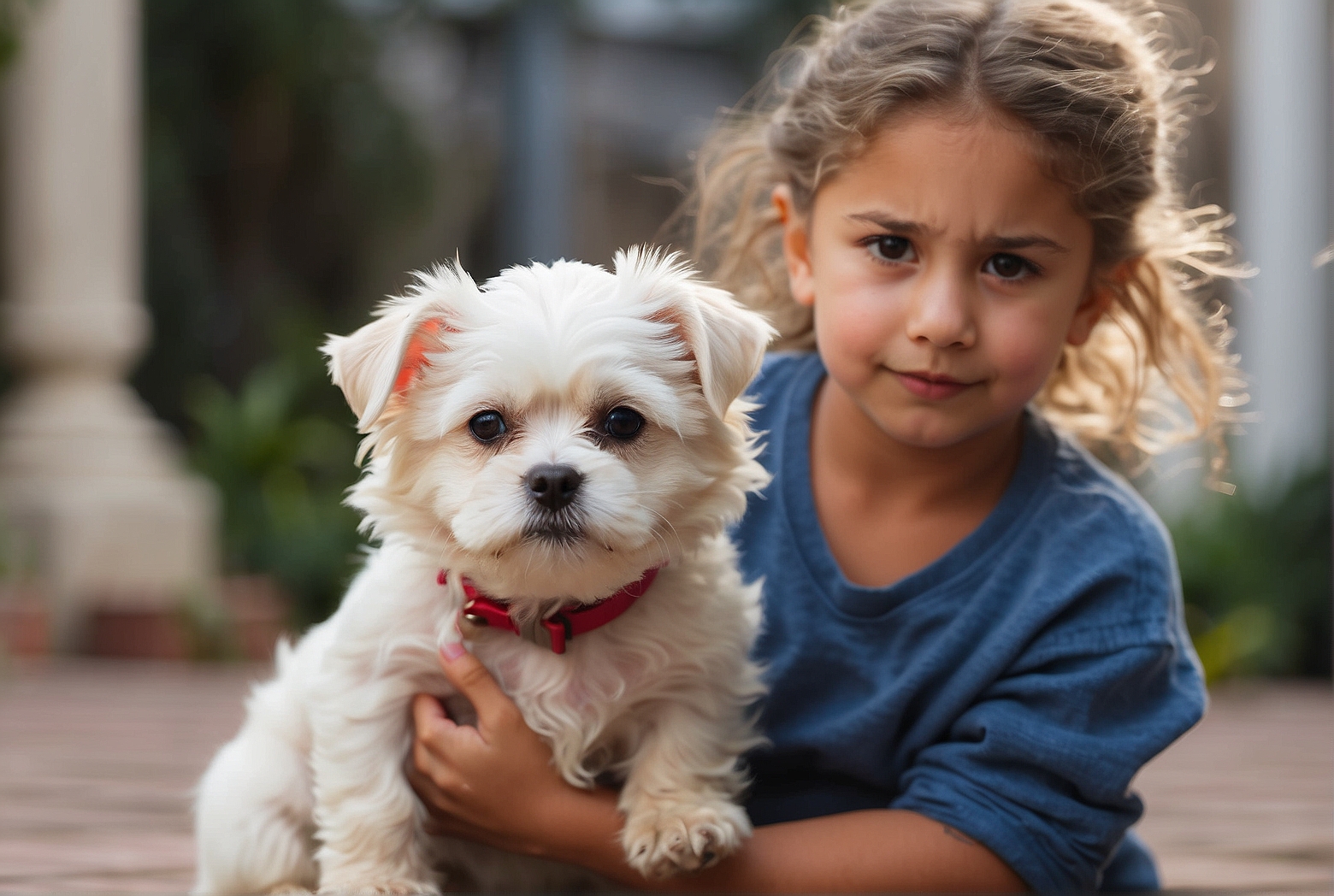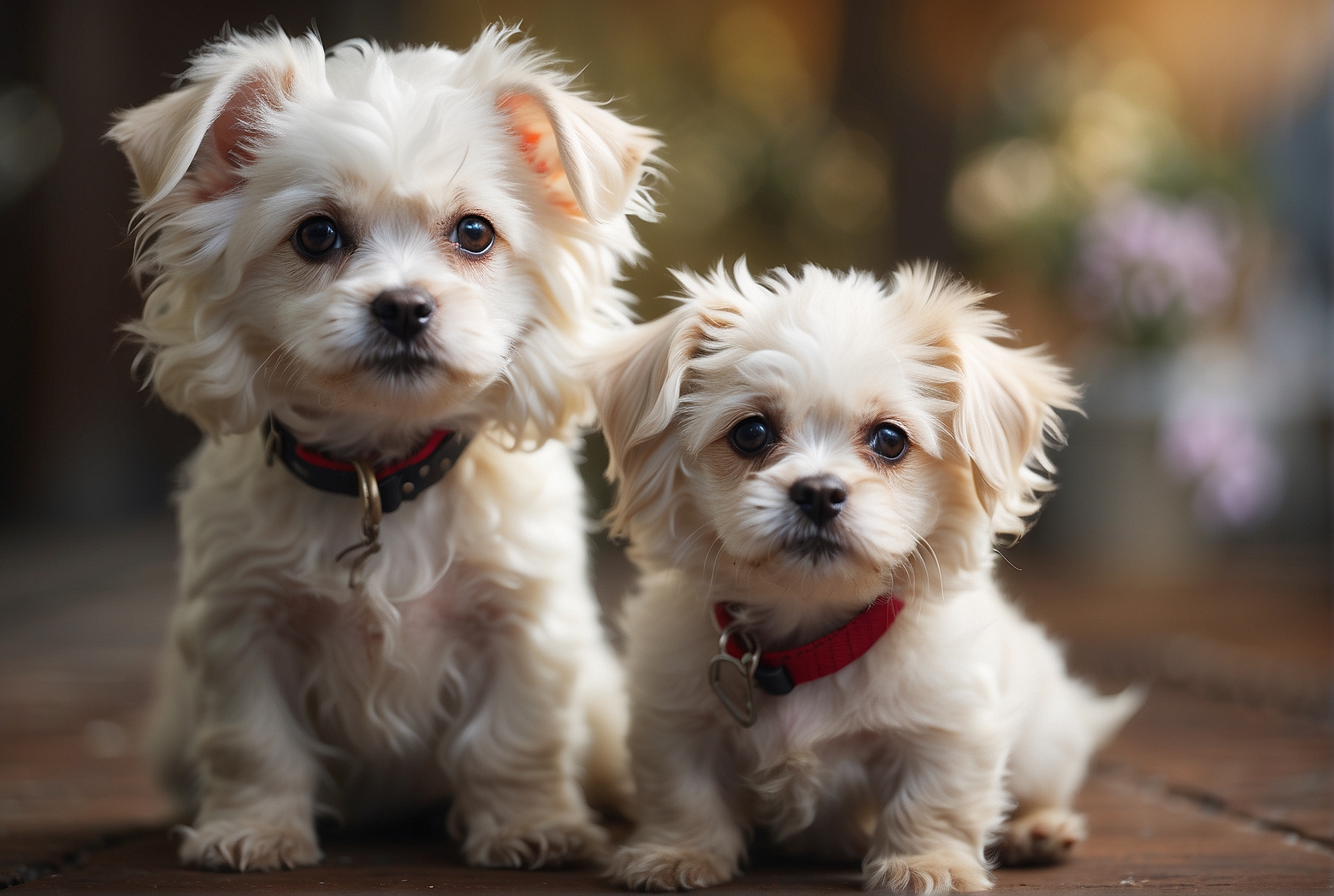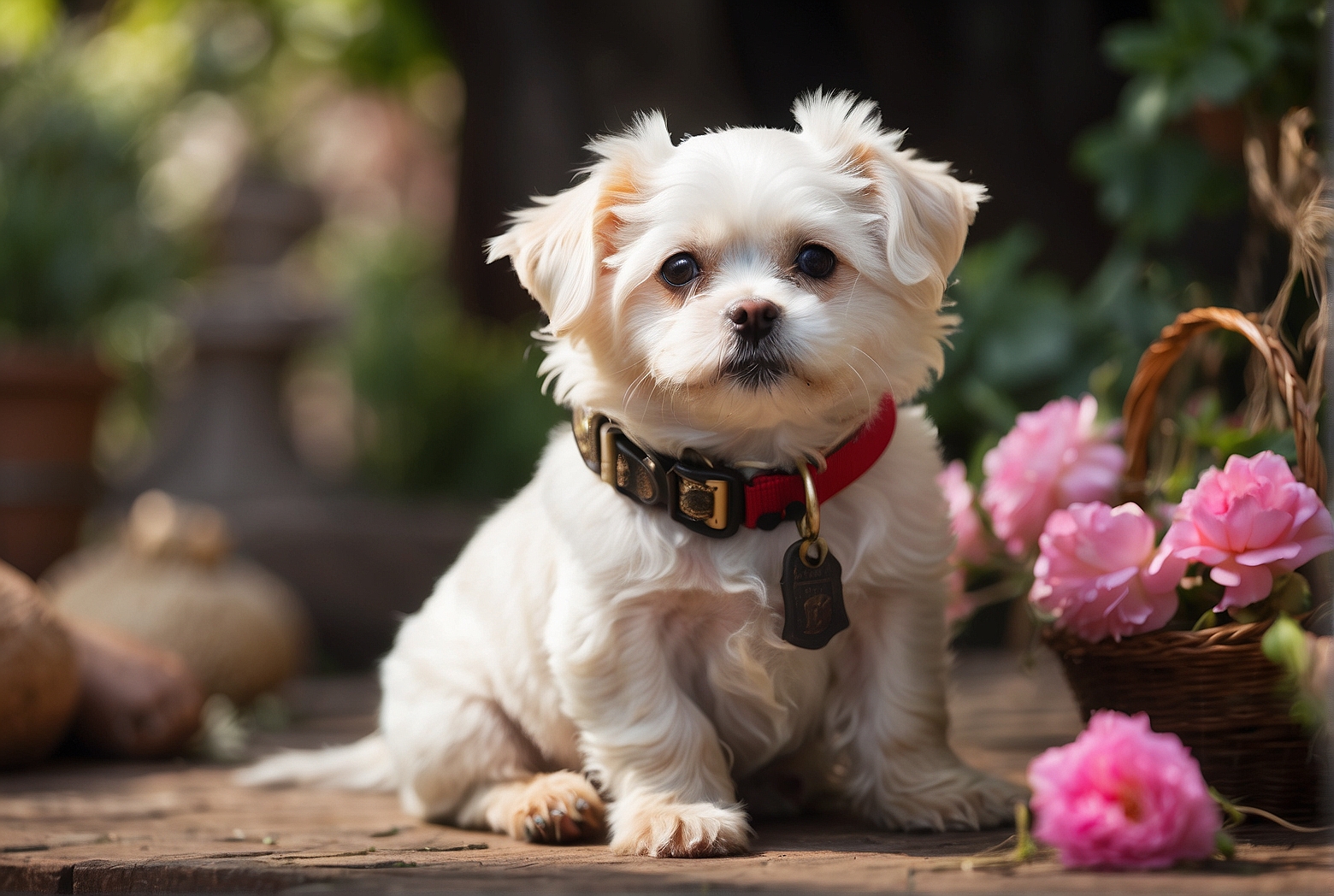So, you’ve decided to bring home a Maltese puppy and you’re curious about when they’ll start showing their protective side. Well, fret not! In this article, we will shed some light on the age at which Maltese dogs typically become protective. From their adorable puppy phase to their full-grown adulthood, get ready to discover the stage at which your furry companion might transform into a vigilant guardian. Get ready for all the insights on this captivating journey of a Maltese’s protective instincts!
Factors Influencing Protection Instinct
Breed Characteristics
The development of a Maltese’s protective behavior can be influenced by various factors. One of the significant factors is the breed characteristics. Maltese dogs are known for their gentle and affectionate nature. However, they also possess a protective instinct, although it may not be as pronounced as in some other breeds. Understanding the breed characteristics can provide insight into how and when this protective behavior may develop.
Individual Personality
Just like humans, dogs have unique personalities that can influence their protective behavior. Some Maltese dogs may naturally possess a stronger protective instinct from an early age, while others may develop it later or exhibit it in a milder form. Factors such as confidence, assertiveness, and sensitivity can all play a role in the development of a Maltese’s protective behavior.
Socialization and Training
Proper socialization and training play a crucial role in shaping a Maltese’s protective behavior. Socialization involves exposing the dog to various people, animals, and environments in a positive and controlled manner. This helps them develop appropriate responses to different situations and reduces the likelihood of fear or aggression. Training, on the other hand, teaches the dog to respond to commands and behave appropriately in different scenarios.
Environment and Upbringing
The environment in which a Maltese is raised can also influence its protective behavior. A well-balanced and secure environment, where the dog feels safe and loved, can contribute to the development of a healthy protective instinct. Conversely, a stressful or neglectful environment may hinder the development of this instinct or lead to fear-based protective behavior.
Development of Protective Behavior in Maltese
Early Puppyhood
During early puppyhood, Maltese puppies begin to develop their protective behavior. This stage is crucial for building a foundation of trust, confidence, and socialization.

Bonding with the Mother
In the first few weeks of life, Maltese puppies bond with their mother. This bonding experience establishes a sense of security, trust, and protection. Puppies learn important social cues and behaviors from their mother, which will shape their interactions with other dogs and humans in the future.
Exploration and Socialization
As Maltese puppies grow, they become more curious and interested in their surroundings. This is an ideal time to expose them to various stimuli, such as different sounds, textures, and experiences. Controlled interactions with other puppies, dogs, and humans during this stage help build their social skills and shape their protective behavior.
Building Trust and Confidence
Building trust and confidence in Maltese puppies is crucial for their development of protective behavior. Positive experiences, consistent training, and gentle handling all contribute to fostering a strong bond between the puppy and their owner. This bond provides a foundation of trust, enabling the pup to feel secure and develop a sense of responsibility for their family’s safety.
Adolescence
During adolescence, Maltese dogs go through significant physical and behavioral changes. This transitional period can also influence their protective behavior.
Increased Independence
As Maltese dogs enter adolescence, they may begin to exhibit increased independence. This newfound independence can impact their protective behavior, as they may assert themselves more and start to test boundaries. It is essential to maintain consistent training and reinforce positive behaviors during this stage to ensure the development of a healthy protective instinct.
Testing Boundaries
During adolescence, Maltese dogs may test boundaries, both within their immediate environment and with their owners. This behavior can be seen as a way for them to establish their role within the family and assert their protective nature. Firm but gentle guidance is necessary to help them understand appropriate boundaries while ensuring their protective behavior is channeled in a positive way.

Maturation of Protective Instinct
As Maltese dogs mature, their protective instinct becomes more pronounced. This is a natural progression as they become more aware of their surroundings and their roles within the family unit. Ongoing socialization, training, and positive reinforcement are vital during this stage to shape their protective behavior into a balanced and appropriate response to potential threats.
Adulthood
Once Maltese dogs reach adulthood, their protective behavior becomes fully established. They develop routines and behaviors that are centered around protecting their family and territory.
Establishing the Territory
In adulthood, Maltese dogs become more aware and possessive of their territory. They may mark their areas and create boundaries to protect their home and family members. This territorial behavior is a manifestation of their protective instinct, as they perceive any encroachment as a potential threat.
Protecting the Family
Adult Maltese dogs are known for their loyalty and dedication to their family members. They will display protective behaviors by alerting and reacting to potential dangers. Whether it’s barking at strange noises or standing guard at the door, their protective instinct kicks in to ensure the safety of their loved ones.
Recognizing Threats
Through socialization and training, adult Maltese dogs become adept at recognizing potential threats. They can differentiate between harmless stimuli and genuine dangers. This ability allows them to respond appropriately, whether it’s through vocalization, defensive postures, or territorial displays.
Displaying Protective Behaviors
In adulthood, the protective instinct of Maltese dogs is evident in their behaviors. They may become more vigilant, frequently scanning their surroundings for any signs of trouble. Barking and vocalization are common protective behaviors, as they alert their owners and deter potential threats. Additionally, their loyalty and watchfulness towards their family members serve as further indicators of their protective nature.
Signs of Protective Behavior
To understand a Maltese’s protective behavior, it is essential to recognize the signs they display when in protective mode.
Alertness and Vigilance
A Maltese displaying protective behavior will exhibit a heightened sense of alertness and vigilance. They may constantly scan their surroundings, paying close attention to any potential threats. Their ears will be perked up, and their body language will display readiness.
Barking and Vocalization
One significant sign of protective behavior in Maltese dogs is barking and vocalization. When they sense a threat or perceive something as potentially dangerous, they will often bark to alert their owners and ward off potential intruders.
Body Language and Posture
A Maltese’s body language and posture can reveal their protective instincts. When in protective mode, they may adopt a defensive stance, with their body slightly tense, tail held high, and ears upright. Their posture may convey confidence and determination to protect their loved ones.
Loyalty and Watchfulness
Maltese dogs are incredibly loyal to their family members, and this loyalty is a significant indicator of their protective behavior. They will closely watch and monitor their family, always ready to provide protection when needed. This watchfulness is a display of their dedication and commitment to ensuring their family’s safety.
Interaction with Strangers
When it comes to interacting with strangers, Maltese dogs may exhibit specific behaviors that are a result of their protective instinct.
Guarding Behavior
Maltese dogs with a developed protective behavior may exhibit guarding tendencies when encountering strangers. This can manifest as barking, growling, or displaying defensive postures to discourage unfamiliar individuals from approaching their owners or territory. Proper socialization from an early age is crucial to ensure they respond appropriately and do not become overly aggressive.
Territorial Aggression
Similar to many other dog breeds, Maltese dogs may display territorial aggression when they perceive their territory to be invaded by strangers. This behavior often includes barking, lunging, and defensive postures. Responsible ownership and training can help channel their protective instinct in a controlled manner and prevent the development of excessive territorial aggression.
Socialization for Proper Response
Proper socialization is essential to ensure Maltese dogs respond appropriately to strangers. Introducing them to a variety of people from a young age and exposing them to different social situations can help them develop proper manners and reduce the likelihood of fear or aggression towards strangers. Early socialization coupled with ongoing training is key in nurturing a well-rounded and appropriately protective Maltese.
Socialization and Training
Socialization and training are crucial aspects of developing a balanced and well-adjusted Maltese with a healthy protective behavior.
Positive Exposure to Various Situations
Exposing Maltese puppies and adult dogs to different situations and stimuli in a positive and controlled manner helps them become comfortable and confident with the unknown. Gradually introducing them to new environments, sounds, and experiences enables them to develop appropriate responses and reduces anxiety or fear-based protective behaviors.
Introduction to Different People and Animals
Early introduction to a wide variety of people and animals is essential for a well-socialized Maltese. This exposure allows them to become accustomed to different individuals, making them less likely to perceive them as threats. It is crucial to ensure these interactions are positive and supervised to prevent any negative experiences that may influence their protective behavior.
Basic Obedience Training
Basic obedience training is an integral part of shaping a Maltese’s protective behavior. Teaching them commands such as sit, stay, and come establishes clear communication channels and helps them understand their role in the family hierarchy. Obedience training enables owners to redirect potential protective behaviors into more appropriate responses when encountering strangers.
Building Confidence and Trust
Building a Maltese’s confidence and trust is essential in nurturing a well-adjusted protective behavior. This can be achieved through positive reinforcement training methods, rewarding desired behaviors, and providing a secure and loving environment. A confident and trusting Maltese is more likely to exhibit a healthy protective instinct without becoming overly aggressive or fearful.
Timeframe for Developing Protection Instinct
The timeframe for the development of a Maltese’s protection instinct can vary from dog to dog. Each individual may exhibit their protective behavior at different stages and to varying degrees.
Varies Across Individuals
The development of a Maltese’s protective behavior varies according to their temperament, genetics, and environment. Some Maltese dogs may display protective behavior from an early age, while others may take longer to develop this instinct. It is crucial to respect each dog’s individual timeline and provide the necessary support and training to encourage healthy and appropriate protective behaviors.
General Timeline and Stages
Generally, Maltese puppies begin to develop their protective behavior during early puppyhood, particularly after bonding with their mother. Throughout adolescence, they may test boundaries and demonstrate a maturation of their protective instinct. By adulthood, their protective behavior becomes more established, with an increased focus on guarding the family and property. Responsible ownership and ongoing training play a vital role in nurturing and shaping this protective behavior throughout different stages of a Maltese’s life.
Conclusion
Individual variations in the development of protective behavior in Maltese dogs highlight the importance of responsible ownership and proactive training. Understanding the factors influencing this behavior, such as breed characteristics, individual personality, socialization, and training, helps owners create a nurturing environment for their Maltese. By fostering trust, building confidence, and providing positive exposure to different situations, Maltese dogs can develop a healthy and well-balanced protective instinct. Ultimately, responsible ownership and proper training are essential in ensuring that a Maltese’s protective behavior is channeled in a positive and appropriate manner, benefiting both the dog and their family.
